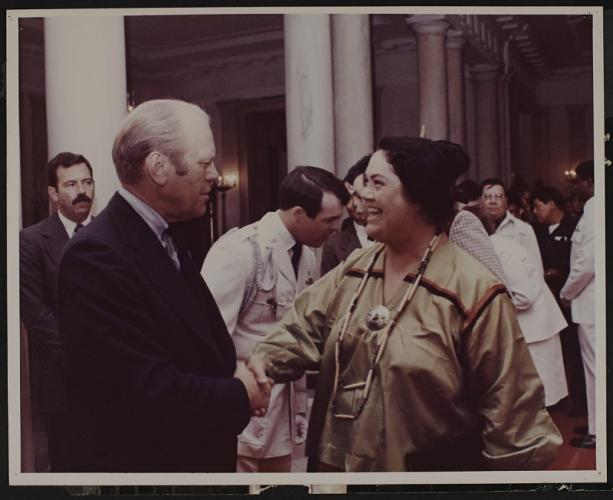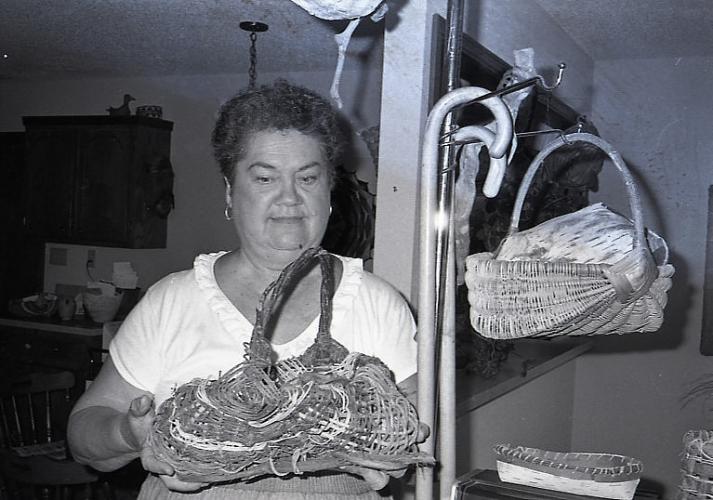
By Sara E. Cohen of Because of Her Story
Veteran and Native Rights activist Grace Thorpe (Sac and Fox) led a life of service. During World War II, Thorpe joined the Women’s Army Corps and was awarded the Bronze Star for her service in the Battle of New Guinea. After the war ended, Thorpe remained in Japan as chief of the Recruitment Section, Department of Army Civilians, at the General MacArthur Headquarters.

Grace Thorpe in the Women’s Army Corps, 1943. National Museum of the American Indian.
In the late 1960s Thorpe moved to Arizona and became involved in Native American activism. She worked as the economic development conference coordinator for the National Congress of American Indians.
At the end of the decade, Thorpe joined Native American activists occupying Alcatraz Island and managed their publicity for three months. Alcatraz is a small island in the San Francisco Bay that was converted into a federal prison that held many Native Americans. In 1969, a group of college students claimed the island and hoped to use the land for new buildings. They advocated for building a Native American university, cultural center, and museum. After 19 months, the government forced the activists to leave. Their occupation raised public awareness and political action for Native American issues.

Grace Thorpe at the White House with President Gerald Ford, 1976. National Museum of the American Indian.
Thorpe then turned to public policy, serving in many roles. She worked as a legislative assistant with the Senate Select Committee on Indian Affairs and as a task force program and planning analyst for the American Indian Policy Review Commission.

Grace Thorpe weaving at home in Oklahoma, around 1987. National Museum of the American Indian.
Returning home to Oklahoma in 1983, Thorpe reserved as a tribal judge and the Sac and Fox health commissioner. She organized her community to oppose storing dangerous nuclear waste on their land. Other tribes invited her to help their own anti-nuclear protests. She continued to advocate in leadership roles in the National Environmental Coalition of Native Americans and the Native American Affairs Council of Greenpeace.
Watch the video in Spanish. See the full video series about women through history who fought for change.
Related Posts
Sara E. Cohen is the digital audiences and content coordinator for Because of Her Story, the Smithsonian American Women's History Initiative. She shares lesser-known histories of women through this website, the Because of Her Story newsletter, and Smithsonian social media.